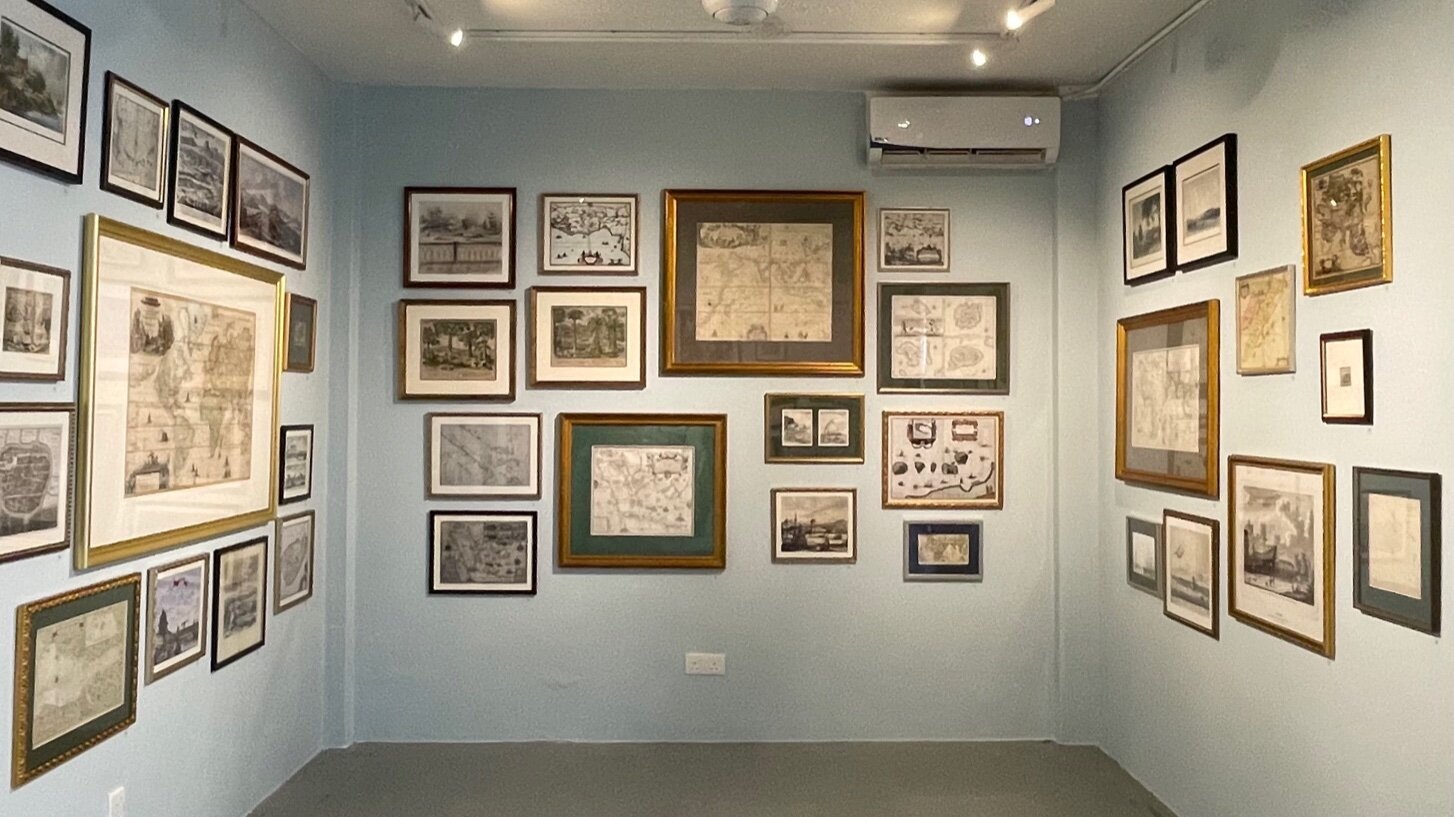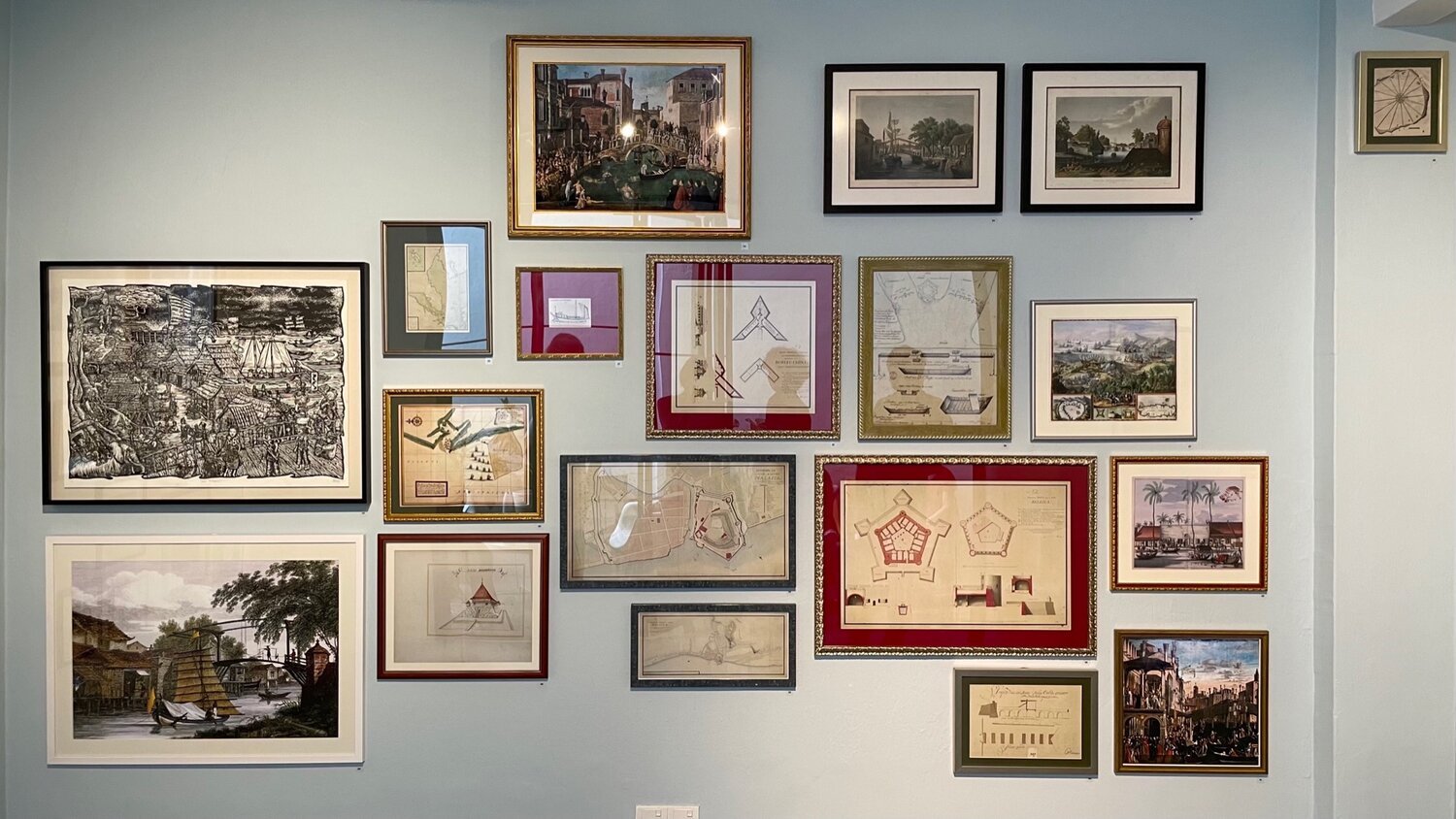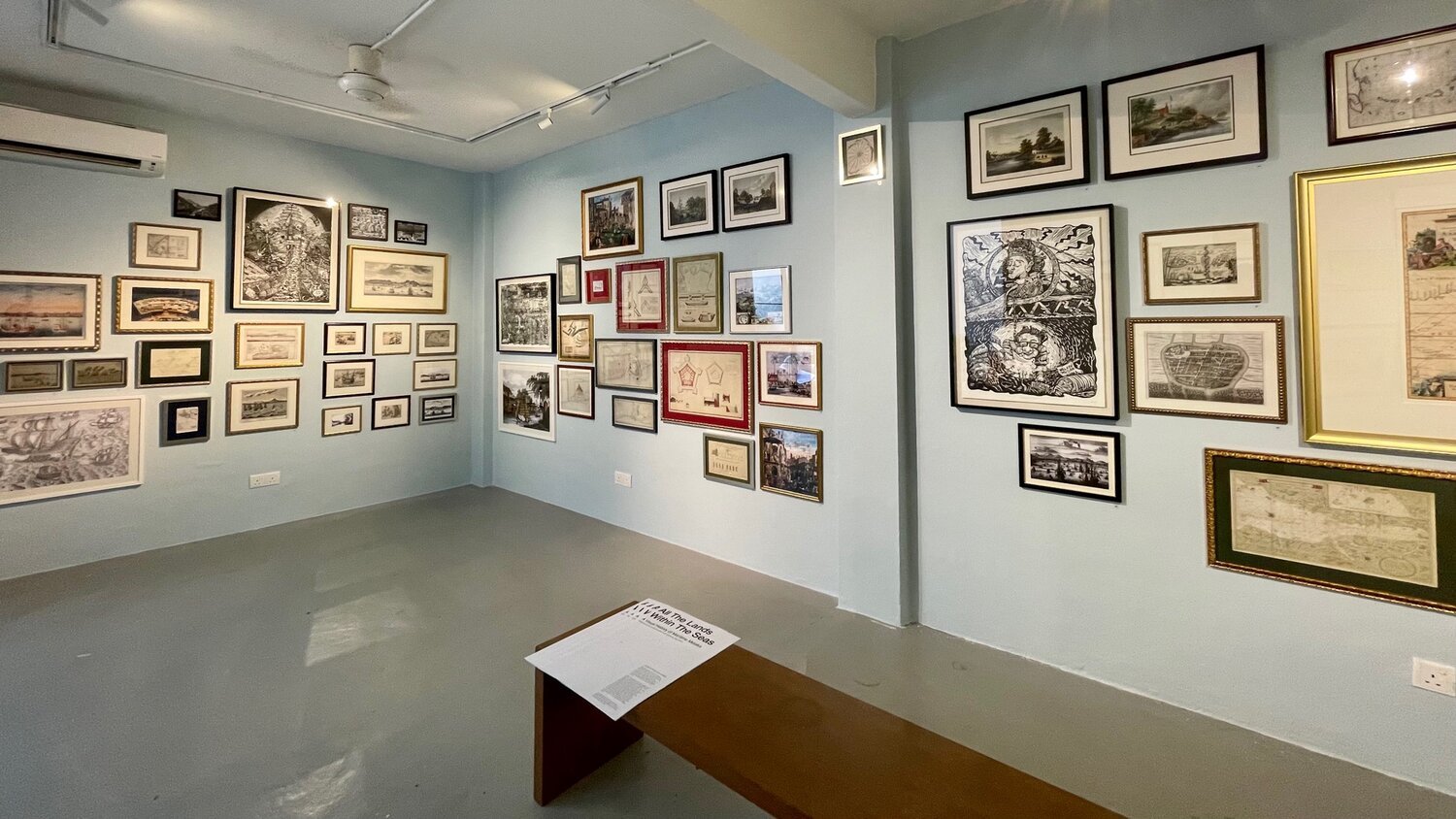Gazing Into Absence: All the Lands Within the Seas
The doorway to dreams lies ajar, a sinuous road passes through. What will I find on the other side, where, with a shiver of fear, the bold would confront monsters? The void?
– Henri Lefebvre
This project grapples with absence.
In many ways, it has long been a struggle for Southeast Asian historians – especially those dealing with pre-colonial times, or who attempt to tell the story of the marginalised – to draw upon authoritative records to paint a picture of the past.
Often, the choice can seem to be a stark divide between turning to “reliable” sources such as the colonial census (that are import with political intent) or treating with the realm of legend and folklore, such as the Hikayat Hang Tuah, and mining whatever historical content is available. Some, like James Warren’s work on sex workers and rickshaw pullers in early 20th-century Singapore, have with great ingenuity and painstaking determination reconstructed what we know from unconventional sources like the diaries of labourers, receipts and hawker menus. In the end, however, historians of the region often contend with resounding silence; voices are either lost, destroyed or drowned out over time.
But absence is not a black hole, without light, without possibility of seeing. The past holds no lanterns, but we can peek through the keyholes to piece together a version of yesterday. The task, then, is ultimately imagination – an imagination informed by research, careful consideration and no small amount of intellectual labour – but an act of imagination, nonetheless. This is not to engage in some post-fact alternate reality where sources cease to matter, but to recognise the fallibility and malleability of human memory, and to embrace the artifice of history-making. In many cases, the task requires an oblique approach to history, an examination of the margins of official narratives, creative engagement with alternative sources and a willingness to acknowledge that context is the bedrock of our work. With that being said, not all imaginations are created equal: some are compelling and exhaustively rigorous, while others are lazy and limp in their purpose.
To paraphrase the words of Aristotle, history abhors a vacuum. Where there has been emptiness, narratives have rushed to fill the void. In the case of Melaka, many of them have been egregious in their desire to fetishize a glorious Sultanate, to emphasise the centrality of the port city. In part, this is fuelled by a kind of shame about our own colonisation, a pride deficit that has manifested in a compensatory history that must aggrandise how wonderful Melaka was to make up for the subsequent years of subjugation and humiliation (both real and perceived). And so, as is most particularly propagated in Malaysian history textbooks, the history of Melaka is conflated with the entire historical arc of the present Malaysian geography, and even the entire region. When so much is bound with so little, the construction of historical identity becomes fragile, delicate. So, it is no surprise that when the historian Ahmat Adam, asserted that the historical existence of the figure of Hang Tuah could not be proved, he was met with protest, derision and threats.
When grappling with the history of Melaka, we too must grapple with absence. Oftentimes, to fill the void, there is a great temptation to view Melaka as a centre of gravity, to lionise its legacy, and to then render the rest of the world as celestial bodies orbiting this sun of a port city. After all, Melaka has been inserted into our national narrative as the cornerstone of Malaysian identity. It is a legacy laden with baggage as a site of deep contestation and emotional import, for Melaka must carry all the weight of the pre-colonial Malaysian story: Melaka must be both Malay and “multicultural”, it must illustrate the “social contract” between the races and it must also trace the moral arc of Malaysia. In short, Melaka must be the righteous parable and raison d'être of the contemporary nation-state — this is its burden, and, thus, also its power.
How do we begin imagining a Melaka unencumbered by this compensatory history? Indeed, as we explore the many faces of Melaka, we cannot escape the nationalistic stakes that have already been ingrained into the discourse of the port city. Absence acquires its own face, after all. But it is also contingent upon this project to present a different side of Melaka. The Melaka we paint is one that does not predicate its relevance in centrality, but in relations: to bodies of water, to the inland, to maritime Southeast Asia, to trade routes, to the winds.
Moving away from defining the city and its history through the port, fort and palace –correspondingly, through commerce, conquest and monarchy – we instead turn towards bodies of water: rivers, straits and oceans. By centring water as the body of the city, we seek to pluralise a vision of Melaka beyond that of a self-contained city on a hill. To paraphrase the historian Sunil Amrith, the sea is equal parts geographical expanse, two-dimensional cartography and mental map, connected not only by trade, but also by telegrams, letters, debts, journeys and stories. Melaka’s relationship to the sea is not as simple as being a conduit for the flow of goods; rather, the sea undergirds a way of conceiving Melaka as a floating web of relationships, places and ideas.
There are a diverse range of records, certainly, about how Melaka was a crucial port of trade, of its battles, of correspondence between kings and emperors. There is also a wealth of folklore surrounding Melaka, from the Sejarah Melayu to fantastical hikayat. These, while primarily the stuff of legend, hold their own important insights into the history, culture and shifting perceptions of Melaka.
Should we turn our gaze to more specific subjects of inquiry – like how a warehouse during the time of the Melaka Sultanate would have been organised or the role of women in the marketplace – then much of the records are non-existent or lost to time. On the other hand, there are many records from the colonial period; after all, for many colonial powers, the act of documentation was crucial to exerting control. On one hand we are faced with a void, on the other a singular view.
Instead, our project is an expedition into the historical imagination, to envisage a more expansive vision of Melaka through its visual artifacts. While most of the images we reference certainly hail from the colonial era, it is our hope that where words are definitive, seeking to establish authority and control, we may yet find crevices of possibility within images. The images may hail from the time of imperialism, but through the act of noticing, of careful observation, they do not necessarily tell an imperial history.
We take Melaka not as a centre, but as a point of transit: we travel its world, from the reaches of the politics of Deshima, Venice, Havana and Masulipatnam; its dwellers and sojourners from the Orang Laut, the Sama-Bajau and the Luçones; to the Dutch, British and Portuguese colonists who sought to capture it. We read the texts that define Melaka, but we focus on the images, oft-neglected as illustrative footnotes. Between text, image and world, fictions and truths alike are entangled in the imagination of Melaka. Tangled, interconnected networks of trade, kingship, patronage and rivalry were par for the course for Melaka during the Sultanate’s existence. Melaka did not exist in isolation but in seas of constant negotiation, continuous change and shifting relationships. Its very existence depended on such webs, which this exhibition seeks to envision.
As the years pass, tides rise and fall, rivers ebb and flow, the straits narrow and widen, monsoon seasons come and go. Ships seek passage, goods are exchanged, ideas spread and mutate. When we pause to consider water as an agent of history, we expand our imaginations of Melaka. Cracking the vise of cultural origin, we hope to invoke a spirit of contingency, to conjure a plural image of what Melaka represents and how it is represented.
It was in such a spirit that it was decided to not only display historical prints (both original and reproduced) but also three original woodcut prints by the Sabahan artist Bam Hizal, as well as a digital collage by Amanda Gayle. Both engaged in acts of seeing; carefully going through the various images that spanned geographies as expansive as the Antilles or the Moluccas, the era of the Ming to the present day, peoples from humble boatmen in the rivers of Ethiopia to admirals and kings. Their gaze was unbounded by modern strictures of national borders or predefined museum routes. Like the nomadic Orang Laut, traversing the waters of the region, their eyes found connection in shared visual languages: small details in the ways a wave is rendered, the shape of a wooden bridge, the bright red of a flag recurring in a ship thousands of miles away in another century. The result was a kind of synthesis, where layers of history, weavings of networks and their own attractions to particular forms sedimented in their work. In many ways, their process of seeing mirrors the kind of experience we would like viewers to have – wandering, weaving, with a sense of whimsy. Their visions are not presented apart from the original artifacts or the reproductions (whose authenticity, in turn, are not marked on the walls). We present them as part of a constellation of images, as part of an interconnected web of global relations enmeshed in unexpected ways.
And so, we look towards not the singular Melaka, the shining city of the port, fort and palace, but as one of many, one of All the Lands Within the Seas.
We have learned that to master the blue oceans people must engage in commerce and trade, even if their countries are barren ... All the lands within the seas are united in one body, and all living things are being nurtured in love; life has never been so affluent in preceding generations as it is today.
– Sultan Mansur of Melaka to the King of Ryukyu, 1 September 1468
This exhibition is a cloud project supported by CENDANA.
cloud projects is a maker and publisher of critical, intimate, and beautiful things. Founded in 2021, we bring together artists, graphic designers, writers, academics, and more to question form, ideas, and narratives.
Project team: Amanda Gayle, Felice Noelle Rodriguez, Lim Sheau Yun, Ong Kar Jin and Nisrina Aulia.
Featuring works by: Amanda Gayle and Bam Hizal.
Original historical prints on loan from the collection of Ong Kheng Liat
The project was made possible by Creative Commons and the copyleft economy. All original writing is held under a Creative Commons Attribution-Share Alike (CC BY-SA4.0) License. Reproductions are sourced from Atlas of Mutual Heritage, Gallica, and Wikimedia Commons.



